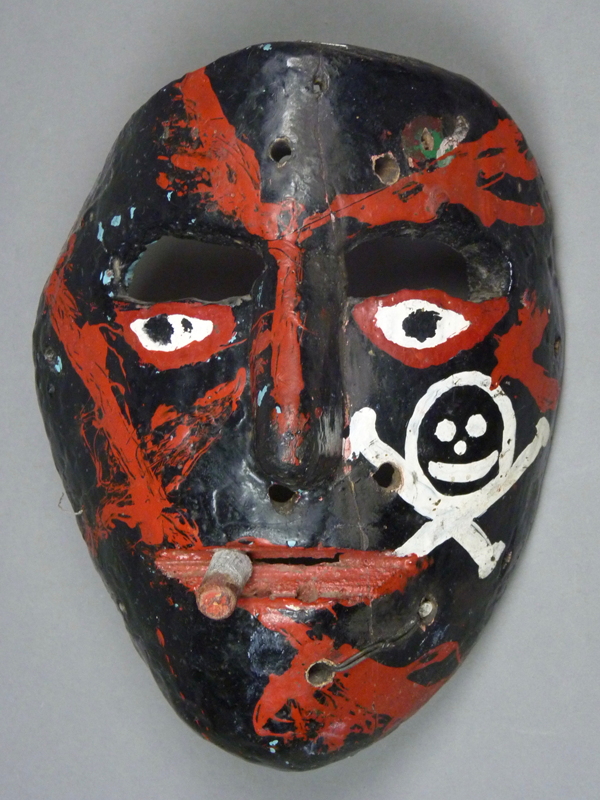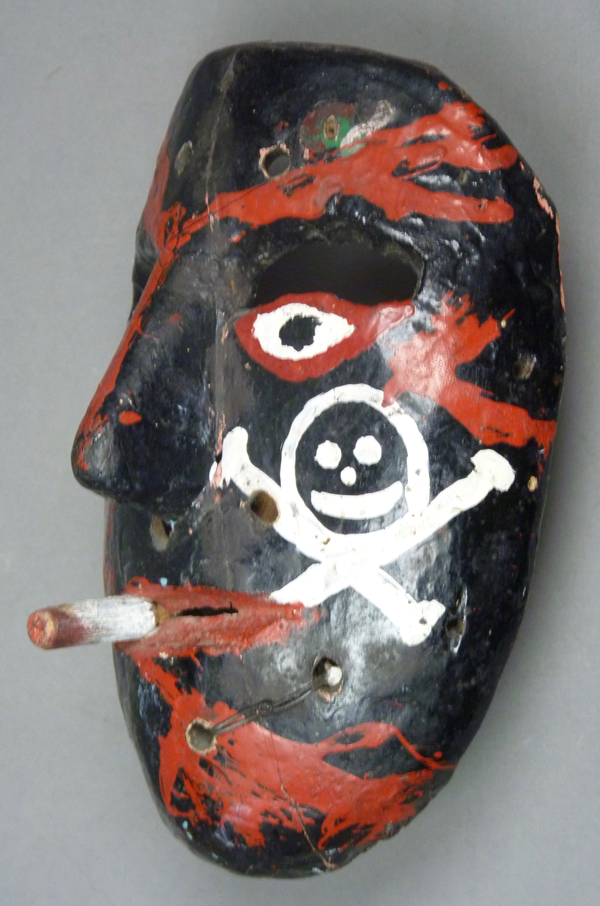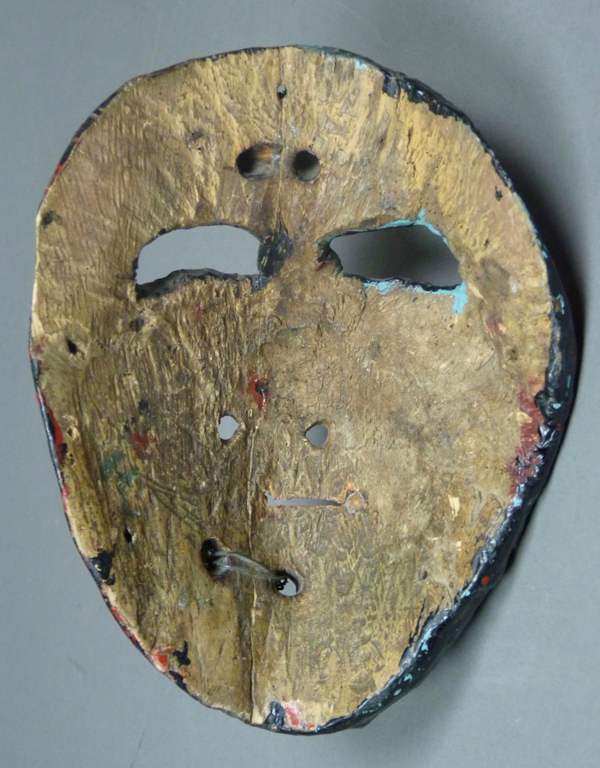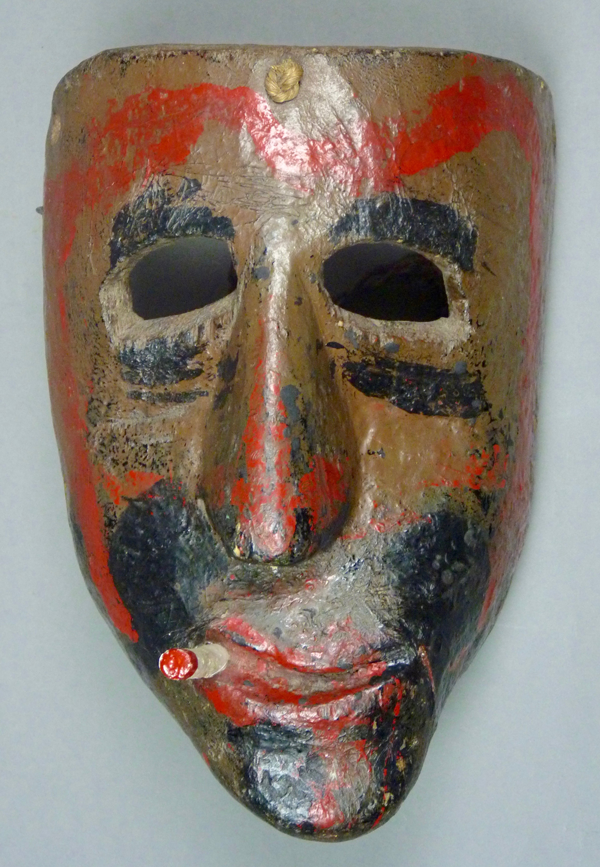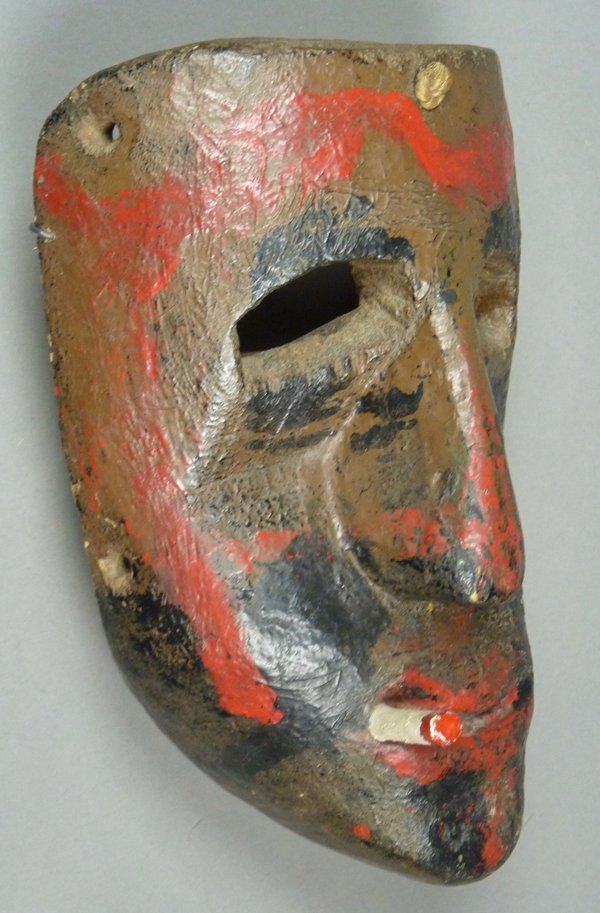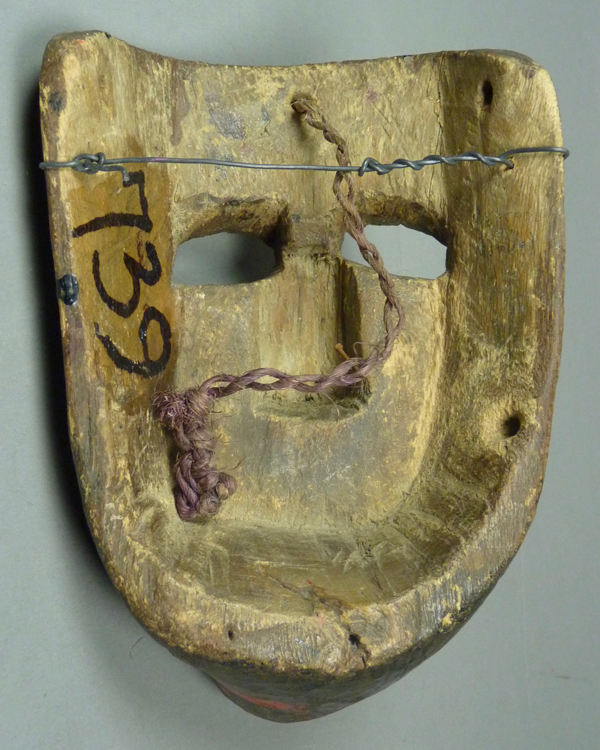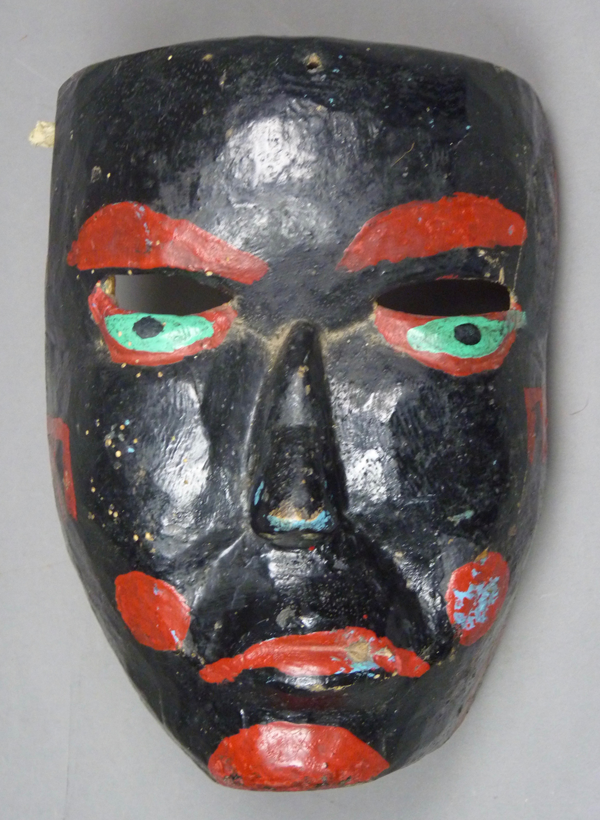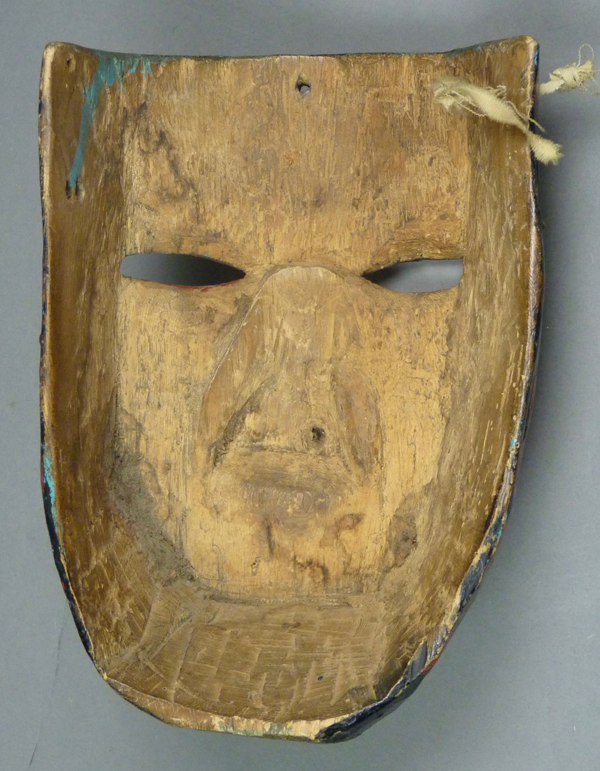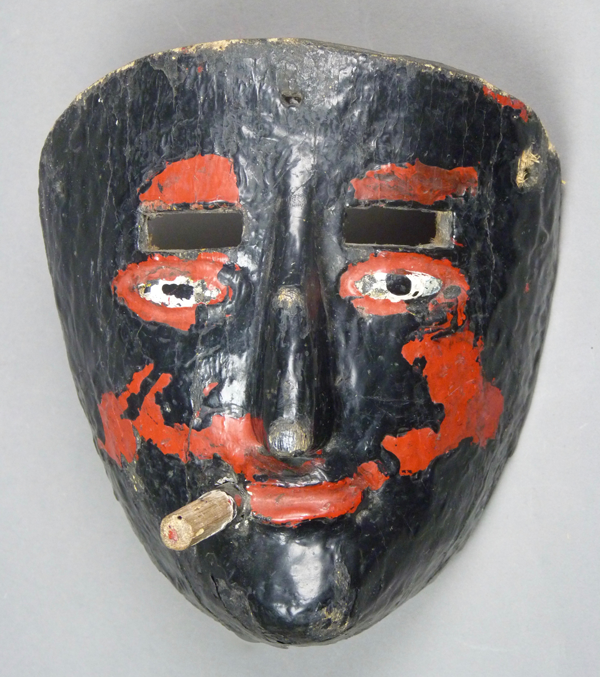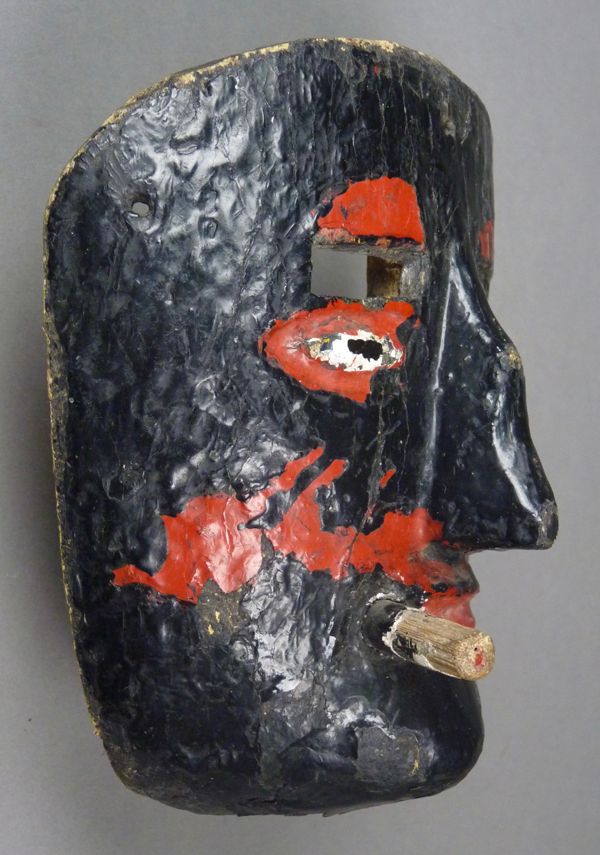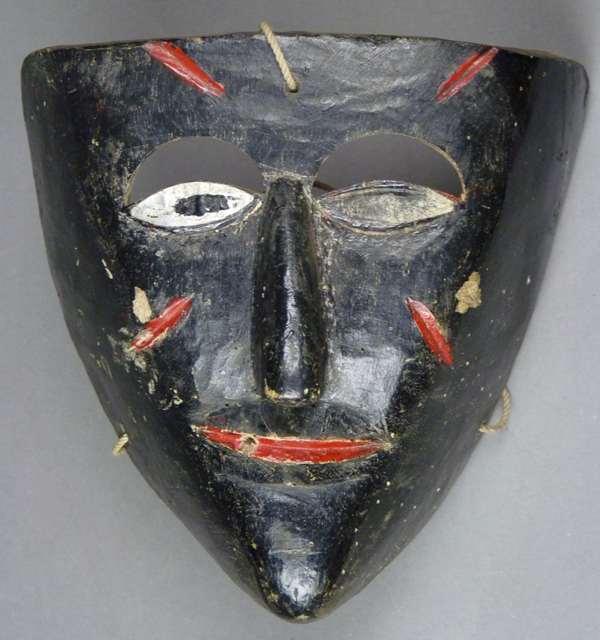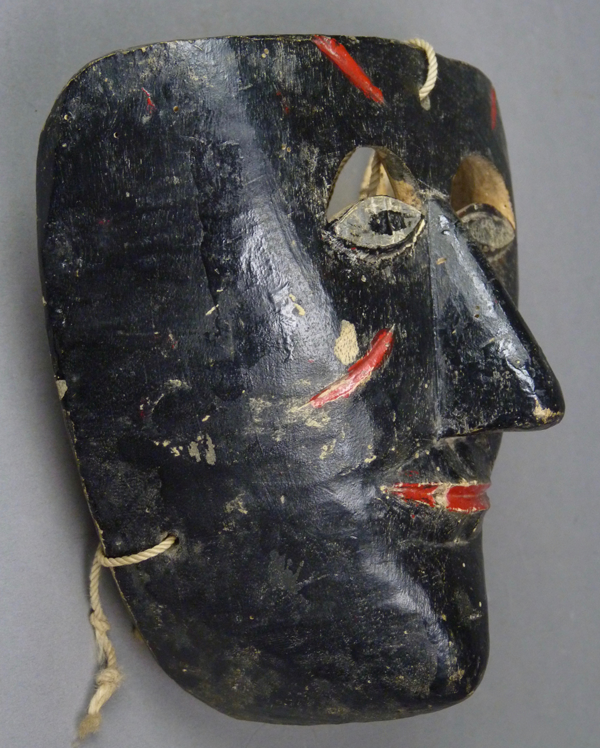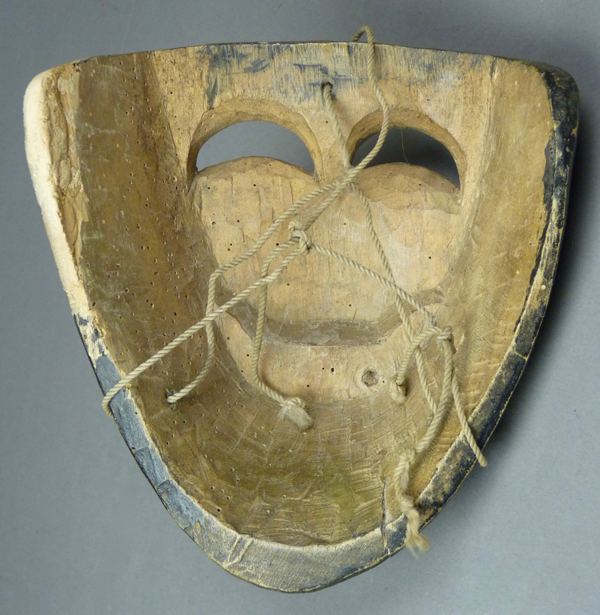In the area of Guerrero that lies along the Pacific coast we find the Danza de los Pescadores (fisherman). Today I will show five Pescador masks from my collection.
The first of these illustrates some common features of these masks. They are usually painted black, and their faces have what appear to be bloody wounds. There is usually a cigarette hanging from one corner of the mouth. I bought this mask from Jaled Muyaes and Estela Ogazón in 1998. My mask collector friend John Levin observes that most Pescador masks have painted rather than carved wounds.
Pescador masks don’t commonly bear an image of a skull and crossbones. In this case that design was painted before some of the bloodstains, so it may be an original feature. Then again, there seem to be earlier layers of paint under the surface layer, betrayed by flashes of turquoise or green.
On the face one can see three pairs of holes, and two of these pairs are tied together with wire. The back view will reveal an old split that has been glued back together, the repair stabilized by these wires. This mask is 7¼ inches high, 5½ inches wide, and 3 inches deep.
The repaired crack is easily seen from the back view. The surface of the back is heavily stained from use.
The second Pescador mask is a Negrito, like all of the others, but portrayed with a brown complexion. In this instance the vision openings take the place of the eyes. Although I purchased this mask from Robin and Barbara Cleaver in 1994, it is obvious that this mask was originally collected by Jaled Muyaes and Estela Ogazón, perhaps 20 years earlier. The evidence for this is on the back of the mask, which follows.
There is a jovial asymmetry to this face. I find this a charming mask.
This mask is 9 inches high, 6¼ inches wide, and 3¾ inches deep.
The number (739) informs us that this mask was in the 1981 Mexico City show of the collection of Jaled Muyaes and Estela Ogazón. Therefore the mask was collected in the 1970s or earlier after obvious long use. The small holes for the hanging wire are another Jaled hallmark.
I purchased the third Pescador mask from René Bustamante in 1994.
There is a round unpainted area on the left side of the mouth that has a daub of turquoise paint underneath. Evidently this was the site of a glued on wooden cigarette. We have seen that turquoise paint before, on the first mask.
This mask is 8¼ inches high, 5¾ inches wide, and 3½ inches deep. Note the shape of the bridge of the nose, which we will see again on the mask that follows this one. On this mask the blood has a stylized appearance.
This mask was very thinly carved. There is obvious staining from considerable use.
Here is the fourth Pescador mask. This one also came from René Bustamante. It has rectangular vision openings over eyes that were carefully carved in relief.
Repeated repainting obscures the careful carving. Here is that humped nose again; the tip is scuffed.
This mask is 6¼ inches high, 5¼ inches wide, and 2¾ inches deep. The cigarettes of the Pescadores always have glowing ends.
The back is heavily stained from long use, and the back of the chin is broken. This mask of rather simple design was cherished by its owner(s).
The last of these Pescador masks is interesting because the carved wounds were placed in such an artful pattern. Both eyes were apparently covered with cigarette foil at one time, but the foil on the left eye has been lost. The eyes were carefully sculpted with slender relief carved rims, and the vision openings are gracefully shaped, indicating the hand of a fine anonymous craftsman. I bought this mask from Kelly Mecheling of New Orleans, in 1995.
There is a hole on the right side of the mouth to mark the place where a wooden cigarette was attached by a nail or peg.
The paint on the face is scuffed and worn. This mask is 6 inches high, 6 inches wide, and 3¼ inches deep.
The inner rims of the vision openings are also carefully carved, with beveled edges, and a generous space was created for the dancer’s nose. The hole for the attachment of the cigarette is visible on the back of the mask. The back demonstrates differential staining from moderate use. Note the repair on the upper left corner of this mask, after severe damage to this area from boring insects. This is a rare instance when I felt compelled to personally restore a damaged mask that I really liked, using Plastic Wood™. Obviously I made no attempt to hide the repair, but contented myself with restoring the mask’s external appearance.
Here is a group photo to demonstrate the relative sizes of these masks. No two of them have the same shape.
I hope that you have enjoyed seeing these Pescador masks from Guerrero. Next week we will look at a pair of Chivo (goat) masks from the same state.
Bryan Stevens

